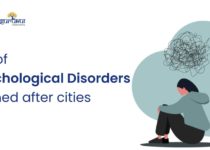Implementation Science: What is it and Why is it Crucial in Health Care?

What is the definition of implementation science?
A brief history
When Everett Rogers published Diffusion of Innovations, a book that became a classic in the field, the problem of non-adoption of evidence-based clinical innovations came to the attention of researchers, clinicians, and healthcare leaders who had been at least partially and intermittently aware of the issue (1962). Rogers viewed innovations’ spread, or diffusion, as a social process with various variables that extend beyond the evidence supporting the innovation itself. He did this by drawing on examples from agriculture, industry, and health. Many others have also called attention to contextual factors that influence innovation adoption or non-adoption, such as those working in knowledge utilization and technology transfer. Both these fields address the tenuous link between evidence and policy decisions, as well as the reasons why knowledge and technology do not flow freely even within single organizations. In addition to these and other research areas, they have served as a collective basis upon which the subject of implementation science has grown.
Implementation Science: A Formalized Definition
“…the scientific study of methods to promote the systematic uptake of research findings and other evidence-based practices into routine practice in order to improve the quality and effectiveness of health services,” according to the definition put forward in the journal’s inaugural issue, Implementation Science. As a result, the purpose of implementation science is not to determine the health consequences of therapeutic innovation but rather to uncover the factors that influence the adoption of the innovation into ordinary practice.
As previously stated, extensive experience has demonstrated that the elements that influence the uptake of a therapeutic innovation are distinct from the factors that determine whether or not an innovation is effective. In this way, the crux of implementation science can be divided into two categories:
1. Identify uptake barriers and facilitators at several levels of context (individuals in treatment, providers, organizations, and other stakeholder groups), and develop a plan to overcome these obstacles and facilitators.
2. Implementation strategies to overcome these roadblocks and strengthen the facilitators to boost the acceptance of evidence-based therapeutic innovations should be developed and put into practice.
Implementation science, with its emphasis on changing individual and social unit behaviour, is closely related to a wide range of subjects, including, for example, health behavior change and organizational psychology.
Why is it Crucial in Health Care?
The current difficult economic climate needs, perhaps more than ever, service delivery that is cost effective. Each service must be designed to produce the most beneficial results possible in the shortest amount of time and money. To date, a varied range of interventions to help society has been established. What merits attention is based on strong empirical research, which gives service providers confidence that favorable outcomes will be attained. Many of these programs are in education and ordinary school practice, and thus ought to be highlighted. However, even the most well-intentioned programs might fail to achieve their objectives due to insufficient implementation.
Implementation science studies the factors that contribute to authentic adoption, and consequently, greater efficacy of evidence-based interventions. After recognizing the critical role of good implementation in long-term sustainability, investigate the rising number of frameworks for practice available in this field to assist you in getting started. The Core Components Model is one such framework that will be used to promote discussion in this session about the processes involved in successful design and evaluation. This will be done by illustrating how the quality of implementation has directly impacted the “Incredible Years” initiative and Promoting Alternative Thinking Strategies (PATHS) curricula’s long-term survival. Then, through an analysis of implementation science, some of the subject’s current challenges will be recognized, as well as prospective areas for additional research. This essay will address the implications of implementation science for educational psychologists (EPs), concluding that implementation science is crucial for designing and evaluating interventions. The EP is uniquely positioned to promote students’ long-term positive development.
Optimization: Implementation Science
It is critical to research what works in schools because it assists authorities and governments in determining the most effective strategies for assisting communities in need. To be successful, a programme must be empirically established and successfully implemented. In addition, the authors claim that effective implementation is contingent upon the establishment of genuine and transparent partnerships. This is demonstrated by the implementation of the “Incredible Years” initiative.
The Incredible Years (IY) programme is a research-based intervention designed to decrease children’s hostility and behavioural difficulties. However, execution of the programme has met with different degrees of success. This is a result of the high degree of implementation fidelity attained. Due to the increasing number of countries investing in IY, adjusting the curriculum to each country’s cultural and contextual requirements has become important. As the authors point out, adaptation is necessary; as such, attention should be given to prevent jeopardizing critical components. As a result of this predicament, proposals that promote integrity, while also allowing for flexibility, have been produced. This guidance outlines an eight-step process for implementation that has resulted in optimal implementation around the world, including at Knowsley Central Primary Support Centre in England, and the Children and Parents’ Service Early Intervention in Manchester, among other locations.
Conclusion
A general technique to ensure that programmes produce long-term, beneficial effects is implementation science. It considers the existing systems and how they interact with one another, and it has the potential to significantly improve results for individuals worldwide. The use of implementation science should be incorporated into the planning and evaluation of every school program to ensure its efficacy and long-term success. Clearly, there are numerous obstacles to overcome. Participants should focus on long-term rewards rather than short-term remedies to successfully embrace this approach and commit the necessary money, support, and attention. The European Parliament is in a unique position to assist the education system in implementing these principles and embracing new opportunities for collaborative working and cross-sector engagement that have arisen recently.


